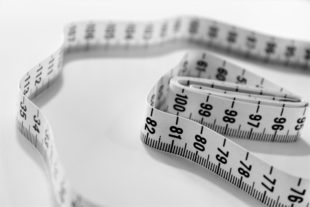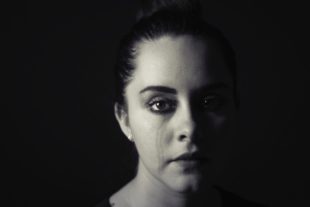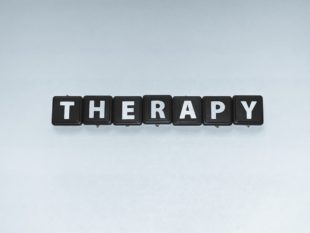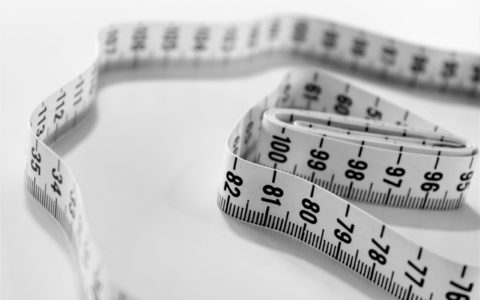Overcoming Body Dysmorphic Disorder
Christian Counselor Spokane
Dissatisfaction with one’s body is a common problem among people today. One person may wish she had curly hair when her hair is straight. Another may wish he were more muscular. Another may hate her nose or wish her waist were smaller. Another may think his eyes are too big or that he is too tall.
What is Body Dysmorphic Disorder?
 Body dysmorphic disorder is much more intense than a simple dislike of one’s body features. It is a serious preoccupation in some aspect of one’s appearance, thinking about it for hours or days at a time, believing the worse even when others affirm the opposite.
Body dysmorphic disorder is much more intense than a simple dislike of one’s body features. It is a serious preoccupation in some aspect of one’s appearance, thinking about it for hours or days at a time, believing the worse even when others affirm the opposite.
People may obsessively think they are fat when they in fact are thin. They may think their hair is ugly and gross when in fact it is fine. What they see in the mirror is different from what others see. Their thoughts are distorted, and it can cause significant distress.
They will isolate and avoid relationships in extreme cases, thinking that they are too ugly to be seen or loved. They struggle to believe that anyone could see beyond the physical flaws they see. Outward appearance becomes the most important aspect of who they are.
This disorder most often develops in teens and young adults and seems to affect men and women equally. Trauma, abuse, dysfunctional family dynamics, emotional abuse, and bullying or excessive teasing can all be contributing factors.
Teens and young adults are inundated with images of men and women (usually famous) in the media who are society’s “ideal” body types and looks. When teens today believe they should be like a Kardashian or other celebrities, contentment with one’s own body is near impossible.
People also struggle with comparing their bodies to the bodies of their peers. This mom with three kids is in shape and thin; why is this other mom still struggling with baby weight? This teen has developed her curves, and this one has not.
This senior in high school is muscular and tall, and this other one is small. Body dysmorphia can be associated with many other mental health problems, but it is treatable. It is a serious and debilitating condition that cannot be ignored. The most common obsessions with body dysmorphia are the nose, chin, hair, skin, ears, sexual body parts (including breasts), and weight.
Associated Mental Health Problems
Depression
Body dysmorphia can lead to symptoms of depression. These symptoms could be thoughts of hopelessness, excessive sadness and crying, other thoughts of self-deprecation, and isolation, and withdrawal.
Anxiety
 Excessive thoughts of worry can be related to body dysmorphia. Worry about how others see a person, worry about how they look in their clothes and worry about getting their appearance exactly right can eventually get worse and become panic. The worry is usually irrational and not based on truth. If the worry is intense, people will often avoid others because of how they look indicating social phobia.
Excessive thoughts of worry can be related to body dysmorphia. Worry about how others see a person, worry about how they look in their clothes and worry about getting their appearance exactly right can eventually get worse and become panic. The worry is usually irrational and not based on truth. If the worry is intense, people will often avoid others because of how they look indicating social phobia.
Suicidal ideation
When left untreated and depression symptoms worsen, thoughts and attempts of suicide are more likely. These patterns of distorted thinking can be profoundly serious and cannot be ignored. If you or you know someone who seems hopeless about their life or more superficially, their appearance, please reach out for help.
Eating Disorders
Eating disorders are often comorbid with body dysmorphia. Binge-eating disorder, anorexia nervosa, and bulimia can be the result of negative thoughts about one’s weight or body size and shape. Someone may think they are too thin, and binge eat or too heavy and binge and purge. There could also be patterns of unhealthy dieting present.
Obsessive-compulsive Behaviors
This could be related to eating issues that occur with eating disorders, but thoughts with body dysmorphia can get quite obsessive. Some compulsive behaviors could be changing clothes repeatedly, checking the mirror too often, getting on the scale multiple times a day, washing one’s face a lot during the day, exercising excessively, and checking makeup while driving. Multiple plastic surgeries can also indicate body dysmorphia.
Overcoming Body Dysmorphic Disorder
Scripture Memorization
When one’s thoughts are focused on unhelpful and often untrue, it is best to focus on what is true. Here are some Bible verses that help with a negative body image:
But the Lord said to Samuel, “Do not consider his appearance or his height, for I have rejected him. The Lord does not look at the things people look at. People look at the outward appearance, but the Lord looks at the heart. – 1 Samuel 16:7

This verse is an important reminder that physical appearance is only one aspect of self and the least important aspect, at that. The most important part of a human is what is within. When a person can cling to this truth, perceived body flaws can begin to lessen over time.
I praise you because I am fearfully and wonderfully made; your works are wonderful, I know that full well. – Psalm 139:14
One of the most quoted verses in scripture, it is vital to memorize when struggling with body image issues. Each human being is uniquely created in a thoughtful way.
Your beauty should not come from outward adornment, such as elaborate hairstyles and the wearing of gold jewelry or fine clothes. Rather, it should be that of your inner self, the unfading beauty of a gentle and quiet spirit, which is of great worth in God’s sight. – 1 Peter 3:3-4
This is another way to remember that beauty is within, not from outward appearance. It does not automatically help someone stop believing the worst about her appearance, but it is a grounding scripture.
Then God said, “Let us make mankind in our image, in our likeness, so that they may rule over the fish in the sea and the birds in the sky, over the livestock and all the wild animals, and over all the creatures that move along the ground.” So God created mankind in his own image, in the image of God he created them, male and female he created them. – Genesis 1:26-27
These verses are gentle truths that all people are made in the image of God, made exactly how he meant for them to be made. He is the master artist, and he makes no mistakes in his art.
Positive affirmations
Another way to build one’s positive self-image is to repeat positive affirmations on a daily basis. Keep them written and in front of you so that you see them often. Some examples are good affirmations are:
- I look exactly how I am supposed to look.
- I am created in the image of God.
- I am a masterpiece of art.
- I don’t have to look perfect.
- My weight does not define me.
- I am not my appearance.
- My body does not have to be perfect.
- My characteristics are unique.
- My people will still find me beautiful without makeup.
Therapy

The power of therapy can never be underestimated, especially concerning body image issues and body dysmorphia. People in someone’s life can affirm them and speak the truth to them over and over, but many people struggle to believe it, thinking that they “have” to say those things because of the nature of the relationship.
However, an objective party who can help them identify their thoughts and compulsive behaviors and then give them evidence-based treatment can be exactly what they need to overcome.
Cognitive Behavioral Therapy is the most commonly used form of therapy for body dysmorphia, but other forms of treatment can also be highly effective. Eye Movement Desensitization and Reprocessing (EMDR), Dialectal Behavioral Therapy (DBT), Narrative Therapy, Internal Family Systems, and other approaches can help someone over body dysmorphia.
The most important thing for someone to know who struggles with this disorder is that he or she is not alone. Body dysmorphic disorder can be isolating, so do not hesitate to be honest with your close friends and loved ones or seek therapy to get professional direction. You can overcome and move forward and even develop a love for yourself.
“Measuring Tape”, Courtesy of Siora Photography, Unsplash.com, CC0 License; “Tear”, Courtesy of Cristian Newman, Unsplash.com; CC0 License; “Studying the Word”, Courtesy of Rachel Strong, Unsplash.com, CC0 License; “Therapy”, Courtesy of Marcel Strauss, Unsplash.com, CC0 License





